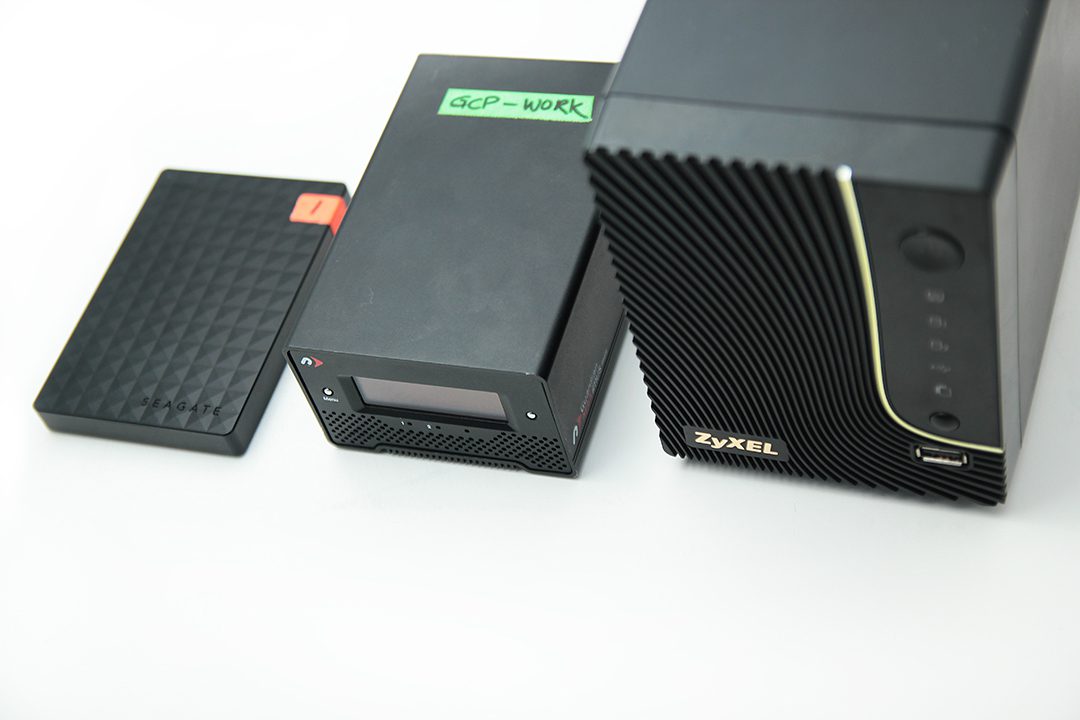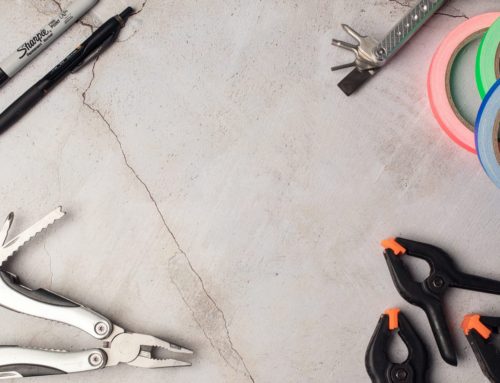Over the years I’ve lost files, more often than not because the data storage device they were on failed; be it a DVD or hard drive. As a result, I’ve spent time reading books like Back Up or Die, blog posts like Chase Jarvis’ Complete Workflow and even watched video tutorials by folks like Jared Platt which left me thinking “This is too expensive! … How am I going to do this?”
I took to the clouds
So being frugal I decided to sign up with iDrive to backup my current projects. I chose the most affordable monthly plan, it was like 500GB. Yay! It offered me a bit of security in the event my computer crashed but became tedious because the upload speed from my Internet Service Provider (ISP) at the time was horrible. I would leave files backing up over the weekend and come back at the beginning of the work week only to see it still uploading … What can I say? I couldn’t afford business class internet operating out of my home.
I later changed my configuration to include an external Western Digital hard drive which I then synchronized to iDrive just for peace of mind.
Forget the Clouds, give me a Seagate
The Western Digital failed and my ISP was still up to no good. Frustrated I later purchased two 1TB external Seagate hard drives and installed a licensed copy of Allwaysync which I set up to do a two way synchronization whenever the 2 drives are connected to my computer (I’m not saying that Seagate is better than Western Digital I was just frustrated. These drives are all man-made and are not guaranteed to last forever).
It worked like a charm at first. Until I was too busy. In the hustle between projects, I forgot to run the application every time I imported a session into Adobe Lightroom.
It so happened that one night I was in the process of editing a rush job but had not synchronized for a few days and one of my drives stopped working. Though I had the source files on my memory cards I was still devastated. That was when I decided I needed to either be more diligent in launching Allwaysync or find another solution that didn’t depend on me.
Guess which one I chose? Option 2!
Let’s Keep it Simple
I decided to get a Newer Technology Guardian Maxumus Mini which runs RAID 1 … That means once I copy the files to one drive it automatically duplicates itself on to the other and if a drive dies it will recreate the files on the new drive once inserted into the enclosure when powered up. I justified the spend because I was now shooting more and had delivered the edited images in a shorter time frame.
The pro to this is that the files are duplicated almost instantly, the con is that the enclosure uses an external power source when used on a computer without Firewire 800, unlike the previous Seagate enclosure powered through USB (I forgot to mention that I bought an empty enclosure and installed the two 1TB drives myself, I shipped them separately to minimize any damage to the HDDs) .
The Maximus Mini functions now primarily as my “Working Drive” as it houses all my current projects and Adobe Lightroom Catalogs.
A little complicated
I took my storage solution one step further by subscribing to pCloud which synchronizes all the files on that Maximus Mini to the cloud once connected to my computer and the internet, in the event something grave happens.
My ISP situation at home has improved a bit and I also work from another location with business class internet which helps tremendously. I chose pCloud instead of returning to iDrive because the technology they use gives me a virtual drive on my computer instead using up actual space – in addition to my 500GB internal HDD I have an external 2TB HDD plugged in, except its link directly to the cloud. Can you say “SWEEEEEEEEET!”
I took a few pages from Jarvis and Platt, organizing my files in a certain way and running only my applications from my computer – no project files. In addition to that, all the edited photos I’ve delivered to clients are hosted on a website called Pixieset (Thanks Scharad for sharing that with me). I initially started with a free account but then outgrew it and subscribed to a Pro plan.
What happens when my “Working Drive” gets full?
Okay! So when I’m done with a project on the 1TB RAIDed Maximus Mini I move them over to another RAIDed system, a Zyxel 320, which my friend and colleague Joel blessed me with. It’s a Network Attached Storage device (NAS) that houses two 4TB Seagate IronWolf drives and it’s plugged into a UPS (the system is maxed out at 4TB RAIDed). Initially, I skimped on the HDD I used and Gladstone, a fellow photographer, recommended I get a drive built for use in a NAS. So I did after having the regular HDD crash on me and I’ve been fine since.
No, I don’t run the NAS 24/7 because my home office doesn’t have an air-conditioned unit and I only need to use the drive when I’m done with a project. I know you’re asking how can all my files fit on a 4TB system. Well! I don’t save all my files … WHAT?!?! … That’s right I only keep a select few; the good cupcakes and I throw away the burnt ones. I’m currently in the process of finding an FTP backup service that I can use with the NAS, as an additional layer of protection (will let you know when I find a reasonably priced one).
What I’ve learned over the years is that no system is perfect, you should find one that meets your current needs, fits within your budget and is maintainable; even if it’s an adaptation of someone else’s. Also having an organizational structure helps tons when storing files; you can find them easier when you need them.
Though my current system isn’t flawless it helps my workflow to be a bit more fluid. Oh! How I wish I knew then what I know now.






Leave A Comment